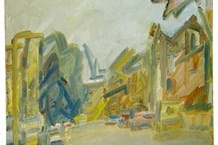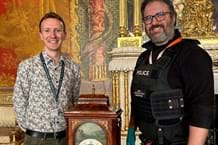YOU are what you own; as true a comment now as it was in Renaissance Italy, and described in the introduction to this book as “the material culture of the elite”, an ode to consumerism where top quality art objects were commissioned by the wealthiest Italian men and women, who could afford to discriminate and to ostentatiously parade that discrimination. This was a society whose members went to great lengths to distinguish themselves from mere mortals through their buying choices. It was not enough that Renaissance art objects were costly; they had to convey other more abstract, lofty and intellectual qualities, which were presented as those of the owners. Scholars worked hard to convince their patrons that not only was an object magnificent and splendid but it had nobility as well. Possession of objects was possession of virtues.
Written by the curator of medals at the British Museum and the curator of Renaissance collections, this book seeks to explore, through six chapters, the multiple meanings and values of the objects with which families such as the Medici, Este and Gonzaga surrounded themselves. Supreme beings sniffed. Pope Pius II said of Borso d’Este that “...he bought as many precious stones as he could and never appeared in public without jewels. He collected rich household furnishings: even in the country he used gold and silver dishes”. A poem criticised the Milanese ladies for their vulgar ostentation in dress and jewellery – “every finger wears a ring” – and such is the cumulative impression, our poet writes waspishly “that seeing them dining at table, you are reminded of the overcrowded counter of a German shop”.
This book examines the complex relationship between the fine arts of painting and sculpture and pieces which offered artistry and utility – furniture, jewellery and vessels made of gold, silver and bronze all enriched the purses of Raphael, Michelangelo and Mantegna.
One of the most readable chapters is Bethothal, Marriage and Virtuous Display. The court account books of the Este family show that as far as the celebration of weddings went, while the male head of the family paid for the jewellery, silver and furnishings, the objects were made to accompany the bride into her new home, for her own use and to furnish her apartments; these might include a bedframe, carved or painted chests and boxes and religious pictures.
You needed them if your husband felt thus: “I loved you because I judged that your virtue and breeding clearly merited my love and that of other scholars.”. There is a chapter on Glass and Maiolica: Art and Technology, one on the All’antica style (superficially ‘antique’) and a discourse on the Value of Disegno – the importance of intellect. More the vale of academe than the brighter shores of populism and rather less than lavishly illustrated.
The true marriage of mind and matter
Objects of Virtue: Art in Renaissance Italy by Luke Syson and Dora Thornton, published by the British Museum Press ISBN 0714128058 £40 hb




